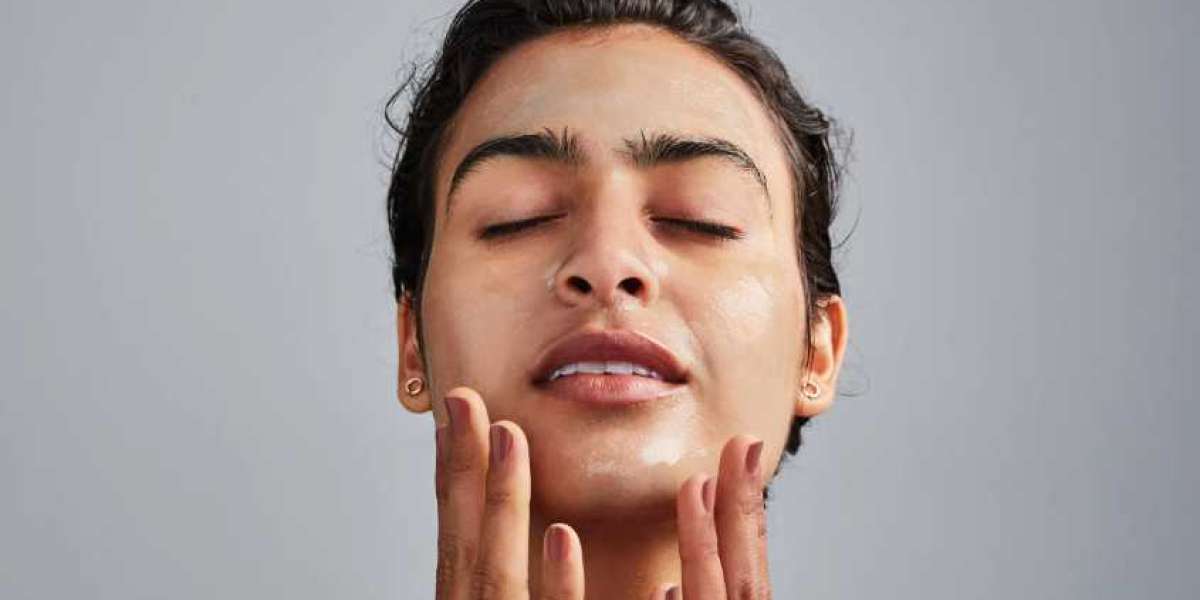An effective nighttime skincare routine is essential for maintaining healthy, radiant skin. While your skin repairs itself during sleep, providing the right ingredients can enhance this natural process. Here’s a guide to the best nighttime skincare routine, tailored to different skin types—oily, dry, combination, sensitive, and normal.
Step 1: Start with a Thorough Cleanse
Cleansing is especially important at night to remove makeup, sunscreen, oil, and impurities that build up on the skin throughout the day. Properly cleansing your skin allows your nighttime products to work effectively.
Types of Cleansers by Skin Type:
- Oily or Acne-Prone Skin: Use a gel or foaming cleanser with salicylic acid or tea tree oil to control excess oil and clear pores.
- Dry Skin: Opt for a cream-based or hydrating cleanser that won’t strip moisture.
- Sensitive Skin: Choose a gentle, fragrance-free cleanser with soothing ingredients like chamomile or aloe vera.
- Combination Skin: Use a gentle foaming cleanser or a balanced gel cleanser to remove impurities without overdrying.
Tip: If you wear makeup, consider a double-cleansing method. Use an oil-based cleanser or micellar water first, followed by your regular cleanser to ensure thorough removal.
Step 2: Apply a Toner or Essence (Optional)
Toners and essences help rebalance the skin’s pH, add a layer of hydration, and prep the skin for the following products. They’re especially beneficial for oily or combination skin, but dry skin types can benefit from hydrating toners as well.
Types of Toners by Skin Type:
- Oily or Acne-Prone Skin: Look for toners with ingredients like witch hazel, niacinamide, or salicylic acid to control oil and minimize pores.
- Dry Skin: Opt for hydrating toners with hyaluronic acid or rose water.
- Sensitive Skin: Use a soothing, alcohol-free toner with calming ingredients like chamomile or cucumber.
How to Use: Apply the toner to a cotton pad or your hands and gently pat it onto the skin. Let it absorb before moving on to the next step.
Step 3: Targeted Treatment with Serums
Nighttime is ideal for using treatment serums with active ingredients that address specific skin concerns, such as dullness, fine lines, or acne. Serums are lightweight, allowing them to penetrate deeply and deliver concentrated ingredients.
Serums for Different Skin Types:
- Oily or Acne-Prone Skin: Try serums with niacinamide, salicylic acid, or retinol to help control oil, reduce acne, and improve skin texture.
- Dry Skin: Choose a serum with hyaluronic acid or peptides for deep hydration and plumping effects.
- Sensitive Skin: Look for calming serums with ingredients like hyaluronic acid, green tea extract, or aloe vera.
- Combination Skin: Use a hydrating serum with niacinamide to balance oily and dry areas, or choose two serums to apply to targeted zones.
How to Use: After toning, apply a few drops of serum to your face and neck. Let it absorb for a minute before moving to the next step.
Step 4: Moisturize to Lock in Hydration
Night creams are typically thicker and more nourishing than daytime moisturizers, as they’re designed to support skin repair during sleep. Choose a moisturizer that suits your skin type and addresses your specific concerns.
Moisturizers by Skin Type:
- Oily Skin: Use a lightweight, gel-based moisturizer with ingredients like hyaluronic acid that hydrate without clogging pores.
- Dry Skin: Opt for a richer cream containing ceramides, glycerin, or shea butter for extra hydration.
- Sensitive Skin: Choose a gentle, fragrance-free moisturizer with soothing ingredients like oatmeal or aloe vera.
- Combination Skin: Use a lightweight gel on oily areas and a richer cream on dry areas, or choose a balanced formula for overall hydration.
How to Use: Apply a generous amount of moisturizer to lock in your previous products and keep your skin hydrated overnight.
Step 5: Add an Eye Cream (Optional)
The skin around the eyes is delicate and can benefit from extra hydration and targeted ingredients to reduce puffiness, dark circles, and fine lines. While not essential for everyone, an eye cream can be a good addition if you have specific concerns.
Eye Cream Ingredients to Look For:
- For Puffiness: Caffeine and antioxidants to reduce swelling.
- For Dark Circles: Vitamin C or peptides to brighten and firm.
- For Fine Lines: Retinol or hyaluronic acid to smooth and hydrate.
How to Use: Dab a small amount around your eye area, being careful not to tug or pull on the skin.
Step 6: Weekly Treatments (1-3 times per week)
Incorporating a weekly treatment can give your routine a boost and address specific concerns more intensively.
Treatment Options:
- Face Masks: Hydrating masks for dry skin, clay masks for oily skin, and soothing masks for sensitive skin.
- Exfoliating Acids: Use AHA (like glycolic acid) or BHA (like salicylic acid) products to help exfoliate dead skin cells and improve texture.
- Retinoids/Retinol: If your skin tolerates it, apply a retinoid once or twice a week for anti-aging and texture benefits (be cautious if you have sensitive skin).
How to Use: Apply these treatments after cleansing and toning but before applying serum or moisturizer. Always follow the product’s instructions, and avoid overuse to prevent irritation.
Sample Nighttime Routine by Skin Type
Here’s a quick sample routine tailored for each skin type:
Oily or Acne-Prone Skin
- Cleanser: Gel or foaming cleanser with salicylic acid
- Toner: Clarifying toner with niacinamide
- Serum: Niacinamide or salicylic acid serum
- Moisturizer: Lightweight, oil-free gel moisturizer
- Eye Cream (optional): Caffeine-based to reduce puffiness
Dry Skin
- Cleanser: Hydrating, cream-based cleanser
- Toner: Hydrating toner with rose water or hyaluronic acid
- Serum: Hyaluronic acid or peptide serum for hydration
- Moisturizer: Rich, ceramide-based night cream
- Eye Cream (optional): Cream with hyaluronic acid for added hydration
Sensitive Skin
- Cleanser: Gentle, fragrance-free cleanser
- Toner: Alcohol-free toner with calming ingredients
- Serum: Calming serum with aloe vera or green tea
- Moisturizer: Fragrance-free, soothing moisturizer
- Eye Cream (optional): Aloe or chamomile-based for a soothing effect
Combination Skin
- Cleanser: Balanced gel cleanser
- Toner: Lightweight toner for hydration
- Serum: Niacinamide serum for balancing oil and hydration
- Moisturizer: Gel moisturizer for oily areas, or a balanced formula for all-over use
- Eye Cream (optional): Lightweight cream for hydration and dark circles
Final Tips for Nighttime Skincare Success
- Be Consistent: Consistency is key to seeing results. Stick to your routine every night.
- Adjust for Your Skin's Needs: Your routine might need changes based on seasons, hormonal shifts, or stress. Pay attention to how your skin reacts and adjust accordingly.
- Be Patient: Many products take time to show results, so give each step a few weeks to see its full effect.
With these steps, you’ll have an effective nighttime skincare routine that aligns with your skin type and needs, helping you wake up with refreshed, healthy, and radiant skin.
https://trendybeauti.ae/








